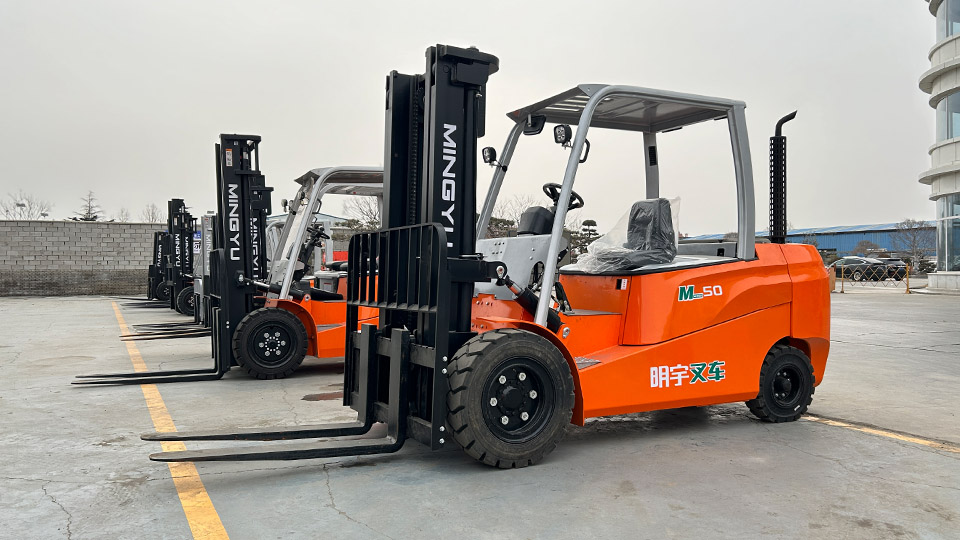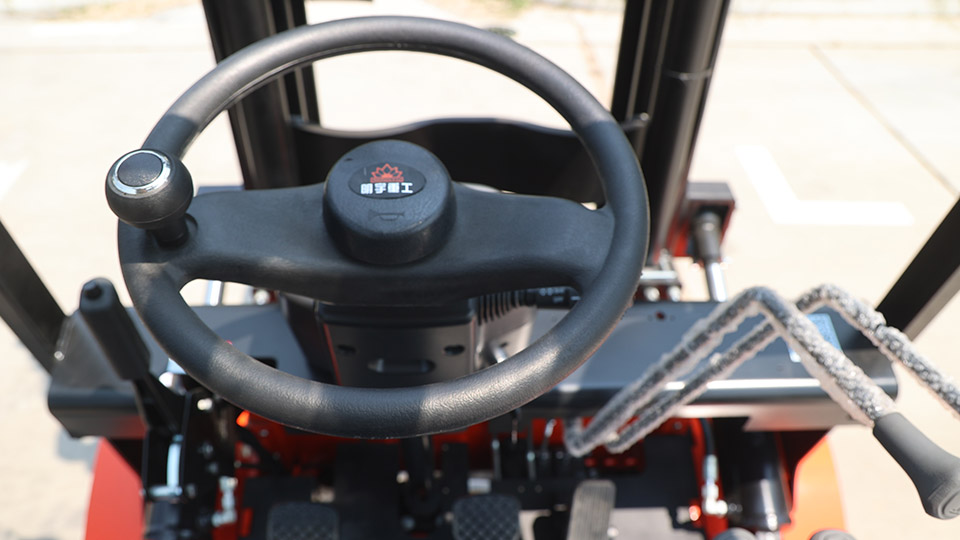
The Choreography of Cargo: A Deep Dive into Freight Truck Loading and Unloading
The ceaseless movement of goods is the lifeblood of modern commerce, and at the heart of this intricate network lies the humble freight truck. These behemoths of the road, ranging from nimble vans to articulated eighteen-wheelers, are the crucial link between manufacturers, distributors, and consumers. But the simple act of a truck arriving at a loading dock belies a complex and often meticulously planned process of loading and unloading cargo. This article delves into the diverse methods, technologies, and considerations involved in efficiently and safely transferring goods to and from freight trucks, exploring the nuances that shape this vital logistical operation.
The fundamental goal of loading and unloading is to move freight efficiently, securely, and without damage. However, the "how" of this process varies dramatically depending on a multitude of factors. These include the type of goods being transported (palletized, loose, oversized, liquid, etc.), the characteristics of the loading and unloading facilities (dock height, available equipment, space constraints), the time sensitivity of the shipment, and the regulatory environment governing safety and handling.

The Cornerstone: The Loading Dock
The loading dock serves as the critical interface between the truck and the warehouse or distribution center. It's more than just a concrete platform; it's a carefully designed area that facilitates the smooth transfer of goods. Key elements of a typical loading dock include:
Dock Height: Standard dock heights are designed to align with the bed height of common truck trailers, minimizing the vertical gap and facilitating level loading and unloading. However, variations in truck and trailer design necessitate the use of dock levelers. These adjustable platforms bridge the gap between the dock and the truck bed, accommodating height differences and ensuring a smooth transition for material handling equipment.
Dock Seals and Shelters: These protective structures form a seal between the truck trailer and the dock opening. Dock seals are compressible foam or inflatable cushions that fit snugly around the trailer's perimeter, while dock shelters are retractable canopies that provide overhead and side protection. Both help to maintain temperature control within the facility, protect goods from the elements, and enhance worker comfort and safety.
Dock Doors: These robust doors, often sectional or roll-up, provide security and environmental control when the dock is not in use. They are designed for frequent opening and closing and must be durable enough to withstand the rigors of daily operations.
Safety Features: Safety is paramount on the loading dock. Essential features include dock lights to illuminate the work area, wheel chocks to prevent unintended truck movement during loading/unloading, dock bumpers to protect the building and trailer from impact, and edge-of-dock warning systems such as visual or audible alarms to prevent falls.
Methods of Loading and Unloading:
The specific method employed for loading and unloading depends heavily on the nature of the cargo. Here are some of the most common techniques:
1. Palletized Goods and Forklifts:
This is perhaps the most ubiquitous method for handling general freight. Goods are typically stacked and secured on pallets – standardized platforms that allow for efficient movement using forklifts.
Loading: Forklifts, powered industrial trucks with lifting forks, are used to pick up palletized loads from within the warehouse or staging area and transport them onto the truck trailer. The operator carefully maneuvers the forklift into the trailer, ensuring the load is placed securely and evenly distributed to maintain the truck's balance. Often, loads are arranged in specific patterns to maximize space utilization and prevent shifting during transit. Straps, load bars, and inflatable dunnage bags may be used to further secure the cargo.
Unloading: The process is reversed. Forklifts enter the trailer, retrieve the palletized loads, and transport them to their designated locations within the receiving facility.
Advantages: High efficiency for standardized, unitized loads; relatively fast operation; utilizes readily available equipment.
Disadvantages: Requires pallets and forklifts; can be less efficient for irregularly shaped or non-stackable items; potential for damage to goods if not handled carefully.
2. Loose Loading and Unloading (Floor Loading/Unloading):
For goods that are not easily palletized or are shipped in bulk without packaging, loose loading or floor loading is employed. This method involves manually loading and unloading individual items or cartons directly onto the truck floor.
Loading: Workers physically carry or maneuver individual items into the trailer, stacking them as efficiently and securely as possible. This often requires significant manual labor and careful planning to maximize space and prevent damage during transit.
Unloading: Similarly, workers manually remove each item from the trailer and transport it to its destination.
Advantages: Can accommodate irregularly shaped or unpackaged items; eliminates the need for pallets.

Disadvantages: Highly labor-intensive and time-consuming; increased risk of worker injury and product damage; lower space utilization compared to palletized loading.
3. Conveyor Systems:
For high-volume, relatively uniform goods, conveyor systems offer a continuous and automated approach to loading and unloading.
Loading: Goods are placed onto a conveyor belt at the loading dock, which then transports them into the truck trailer. Within the trailer, the goods may be automatically or manually directed to their designated positions. Telescopic conveyors that extend into the trailer are commonly used to reduce the distance workers need to carry items.
Unloading: The process is reversed, with goods moving from the trailer onto a conveyor belt that transports them into the receiving facility.
Advantages: High throughput and efficiency for suitable goods; reduces manual handling; can be integrated with automated sorting and warehousing systems.
Disadvantages: High initial investment; best suited for specific types of goods; less flexible for handling diverse cargo.
4. Roll-on/Roll-off (Ro-Ro):
This method is specifically designed for wheeled cargo, such as vehicles, trailers, and heavy equipment.
Loading: Vehicles or equipment are driven or towed directly onto the truck trailer via ramps. Specialized trailers with integrated ramps or the use of external ramps at the loading dock facilitate this process.
Unloading: The wheeled cargo is driven or towed off the trailer using the same ramps.
Advantages: Efficient for wheeled cargo; minimizes the need for lifting equipment.
Disadvantages: Limited to wheeled items; requires specialized trailers and loading/unloading areas.
5. Bulk Loading and Unloading:
For loose, unpackaged materials like grains, powders, liquids, and gases, specialized bulk loading and unloading methods are employed.
Loading: Materials are typically transferred into specialized tank trailers or hoppers using gravity, pneumatic systems, or conveyor belts. The loading process is carefully controlled to ensure proper filling and weight distribution.
Unloading: Unloading methods vary depending on the material and the trailer design. Liquids and gases are often pumped out, while dry bulk materials may be discharged using gravity, pneumatic conveying systems, or screw conveyors.
Advantages: Efficient for large volumes of homogeneous materials; minimizes packaging waste.
Disadvantages: Requires specialized equipment and trailers; strict safety protocols are necessary due to the nature of the materials.
6. Side Loading:
Some specialized trailers feature side doors or curtains that allow for loading and unloading from the side rather than the rear. This can be advantageous in situations with limited dock space or when accessing specific items within a mixed load. Forklifts or other lifting equipment are typically used in conjunction with side loading.
Advantages: Improved access to cargo; useful in confined spaces.
Disadvantages: Requires specialized trailers; may reduce the overall structural integrity of the trailer.
Technology and Innovation in Loading and Unloading:
The field of freight loading and unloading is constantly evolving, driven by the need for greater efficiency, safety, and speed. Some key technological advancements include:
Automated Guided Vehicles (AGVs) and Autonomous Mobile Robots (AMRs): These driverless vehicles can autonomously transport goods within warehouses and even load and unload trucks in controlled environments.
Robotic Loading and Unloading Systems: While still in development and early adoption, robotic arms and automated systems are being explored to automate repetitive and physically demanding tasks.
Warehouse Management Systems (WMS): These sophisticated software systems optimize warehouse operations, including the scheduling and management of loading and unloading activities, ensuring efficient flow and resource allocation.
Telematics and Real-time Tracking: These technologies provide visibility into the location and status of trucks and cargo, allowing for better planning and coordination of loading and unloading operations.
Advanced Dock Management Systems: These systems help manage truck arrivals and departures, optimize dock utilization, and improve communication between drivers and warehouse personnel.
Safety Considerations:
Loading and unloading freight trucks inherently involves risks. Ensuring the safety of workers and preventing damage to goods are paramount. Key safety considerations include:
Proper Training: All personnel involved in loading and unloading operations must be adequately trained on safe operating procedures for equipment and handling techniques.
Personal Protective Equipment (PPE): Workers should wear appropriate PPE, such as safety shoes, gloves, and high-visibility vests.
Equipment Maintenance: Regular inspection and maintenance of forklifts, conveyors, and other equipment are crucial to prevent malfunctions and accidents.
Clear Communication: Effective communication between drivers, dockworkers, and supervisors is essential for coordinating activities and avoiding misunderstandings.
Ergonomics: Implementing ergonomic principles in manual handling tasks can help reduce the risk of musculoskeletal injuries.
Securement of Loads: Proper load securement within the trailer is vital to prevent shifting during transit, which can lead to accidents and damage.
Conclusion:
The seemingly simple act of loading and unloading a freight truck is a multifaceted process involving a diverse range of methods, technologies, and considerations. From the fundamental importance of the loading dock to the specialized techniques for handling different types of cargo, efficiency and safety are the guiding principles. As technology continues to advance, we can expect further automation and optimization in this critical link of the global supply chain, ensuring the smooth and reliable flow of goods that underpins our modern world. The choreography of cargo, while often unseen by the end consumer, is a testament to the intricate planning and execution that keeps our economies moving.
Name: selena
Mobile:+86-13176910558
Tel:+86-0535-2090977
Whatsapp:8613181602336
Email:vip@mingyuforklift.com
Add:Xiaqiu Town, Laizhou, Yantai City, Shandong Province, China